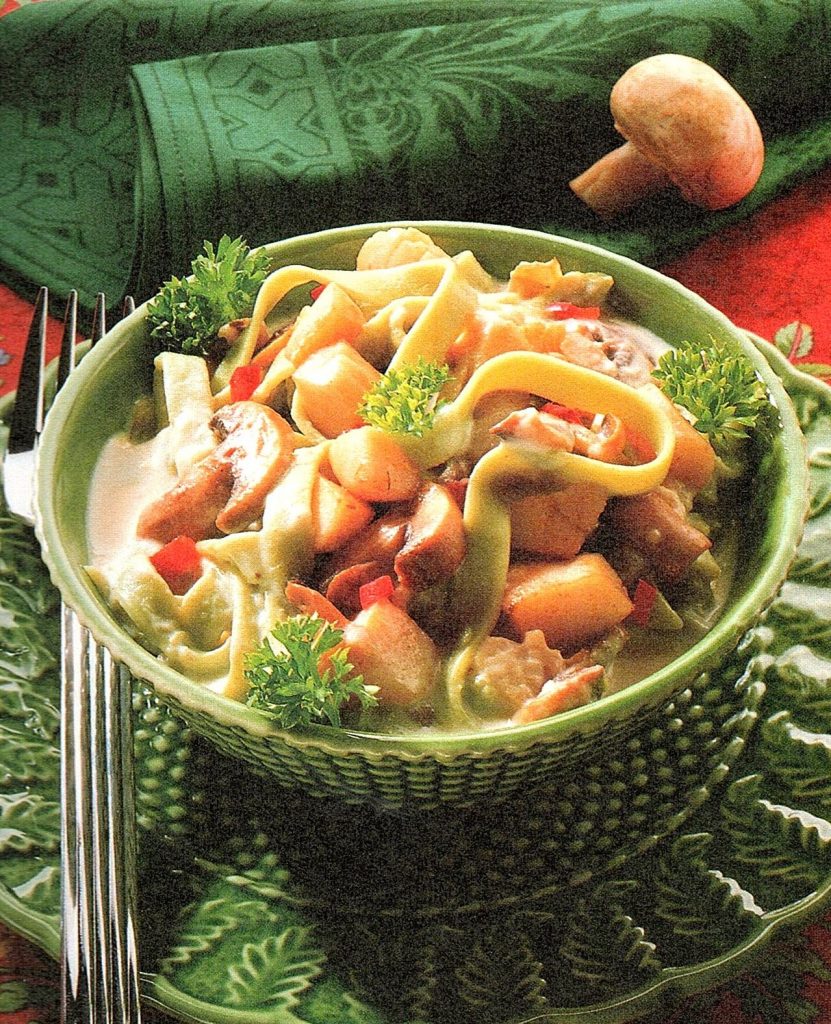
Often confusion arises when discussing the creamiest of the Italian pastas. Is it Alfredo or Carbonara, or a combination of each? Many restaurants serve a combination sauce which people love, and of course perfectly acceptable when the consumer wants it, it customer is always right. However there are some important differences in the two sauces.
Alfredo di Lelio, ever heard of him, well he was a restaurateur in Rome located on Via della Scrofa, like most husbands, when you wife is pregnant she has strange craving, Alfredo’s wife wanted pasta but not with a sauce that gave her the crushing “morning sickness” so just for her he created pasta in bianco or pasta in butter. However great things need to shared, soon the pasta was appearing on the restaurant menu and fortune would have it, while on honeymoon Douglas Fairbanks and Mary Pickford strolled into the restaurant and were served the dish. They loved it so much they took the recipe back to the America’s, but sent Alfredo and Ines a set of cutlery as thanks with “Alfredo the King of the noodles” engraved on the golden spoons. Fame came and soon Alfredo’s restaurant was known around the world for the fettuccini dish that bears his name. However the most parts of Italy it may not be found as “Alfredo” but rather fettuccine al burro, fettuccine burro e parmigiano, or pasta in bianco.
The simplest of sauces was limited to butter and Parmigiano-Reggiano cheese, the addition of preheated cream and thickening by an egg came along later, which is the preference of most North Americans.
Carbonara is also a classic creamy Italian pasta sauce without the addition of cream. In essence it is the “burro e Parmigiano” (butter with Parmigiano cheese) tossed with the pasta water and thickened with egg. Flavored with garlic and Guanciale, (Italian style bacon made from the cheeks of a hog’s head) or pancetta, or streaky bacon, the fat is what gives a distinctive flavor that is not found in Alfredo.
Carbonara gained popularity in North America after World War 2 when eggs and dairy were rationed the service men would bring their egg ration into town restaurants while serving in Italy where the chefs and cooks would prepare the Carbonara dishes for them.
The use of egg yolks instead of whole eggs will result in a creamier sauce. Tossing the pasta egg and cheeses with the pasta water takes a little effort but it is well worth the effort. Speaking of the water cook your pasta in just enough salted water (not too salty) to cover the pasta, as the starch in the water will assist in thickening the sauce.
This of course is a cheese sauce, usually calling for Pecorino Romano alone, but consider using a combination by adding some Parmigiano-Reggiano as well, a 50-50 blend works very nicely.
The combining of the bacon (any kind) and adding the egg to the Alfredo sauce produces what most North American restaurants serve as either Carbonara or Alfredo.
These two sauces are generally served by tossing into the long pastas, (spaghetti, fettuccini, bucatini, mafalda etc.) Short pastas like farfelle or ridged pasta as rigatoni that hold the sauce always are also nice when tossed with the sauce.
An important key is to toss the pasta with the majority of the sauce, reserving the remaining to ladle over the pasta when serving.
Alfredo Sauce
½ Cup Butter
1 ½ Cups Heavy Whipping Cream
2 Teaspoons Garlic Minced
2 Teaspoon fresh Italian Seasoning, thyme, basil and oregano (optional)
½ Teaspoon Salt
¼ Teaspoon Cracked Black Pepper
2 Cups Freshly Grated Parmesan Cheese
Instructions
Add the butter and cream to a large skillet.
Simmer over low heat for 2 minutes.
Whisk in the garlic, Italian seasoning, salt, and pepper for one minute.
Whisk in the parmesan cheese until melted. Toss with the pasta at once and serve immediately.
Carbonara Sauce
1 lb. long pasta
2 tablespoons extra-virgin olive oil
4 ounces Guanciale, pancetta or slab bacon, cubed or sliced into small strips
4 garlic cloves, finely chopped
4 large egg yolks
1/2 cup each freshly grated Parmigiano-Reggiano & Pecorino Romano, plus more for serving
Freshly ground black pepper
1 handful fresh flat-leaf parsley, chopped
Directions
Prepare the sauce while the pasta is cooking to ensure that the spaghetti will be hot and ready when the sauce is finished; it is very important that the pasta is hot when adding the egg mixture, so that the heat of the pasta cooks the raw eggs in the sauce.
Bring a large pot of salted water to a boil, add the pasta and cook for 8 to 10 minutes or until tender yet firm (as they say in Italian “al dente.”) Drain the pasta well, reserving 1/2 cup of the starchy cooking water to use in the sauce.
Heat the olive oil in a deep skillet over medium flame. Add the Guanciale and sauté for about 3 minutes, until the bacon is crisp and the fat is rendered. Toss the garlic into the fat and sauté for 1 minute to soften.
Add the hot, drained spaghetti to the pan and toss for 2 minutes to coat the strands in the bacon fat. Beat the eggs and Parmesan together in a mixing bowl, stirring well to prevent lumps. Remove the pan from the heat and pour the egg/cheese mixture into the pasta, whisking quickly until the eggs thicken, but do not scramble (this is done off the heat to ensure this does not happen.) Thin out the sauce with a bit of the reserved pasta water, until it reaches desired consistency. Season the Carbonara with freshly ground black pepper and taste for salt. Plate the pasta Carbonara into warm serving bowls and garnish with chopped parsley. Serve at once with additional cheeses blend together.